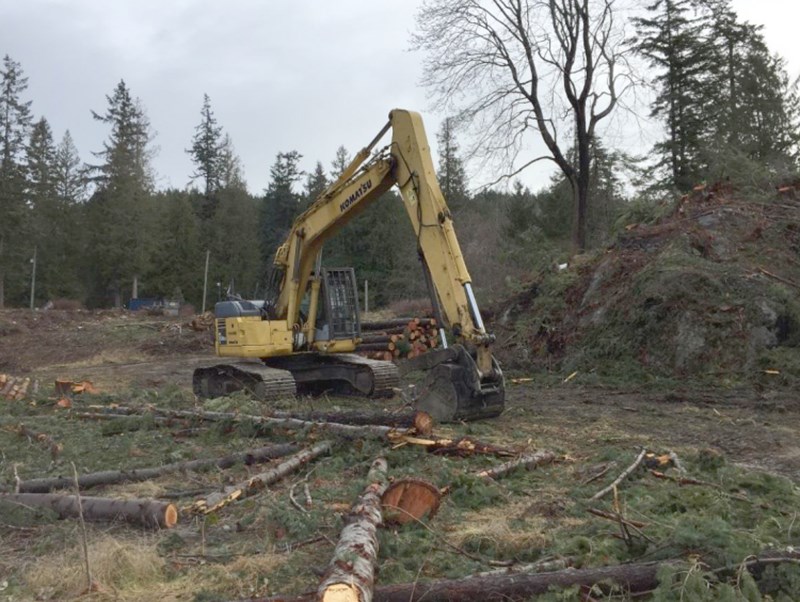A developer carried out tree cutting, blasting and bulldozing and caused major desecrations at a sacred ancestral burial site at šɛʔaystən (Emmonds Beach), north of Powell River, according to a March 11 media release from the Tla’amin Nation government. Tla’amin was notified of the incident on February 25.
“The images are very upsetting; this follows recent desecrations by the city, homeowners and tourists at other sites,” stated Tla’amin hegus John Hackett. “To see graders and bulldozers driving over our ancestors’ remains at this site is completely unacceptable. We will take all means necessary including legal and direct action to stop these continuing insults to our ancestors and violations of our culture and laws.”
In October 2020, Tla’amin denied a request from the landowner and developer to disturb the site.
“Without a permit and in violation of the Heritage Conservation Act, they destroyed the resting places of many of our ancestors. šɛʔaystən is a place of immense importance to the Tla’amin people; it is a village site and harvesting site,” Tla’amin stated in the release. “It is a place where some of our elders and ancestors were born and many of our ancestors are laid to rest.”
The location is also the resting place of at least three Tla’amin ancestral chiefs and the site of an important spirit healing event, according to the release.
“During the smallpox epidemic it is reported that many of our people got sick and died here,” stated Tla’amin council member Erik Blaney. “Our histories tell us that due to the ravages of the disease there were not enough living to bury the dead and that many died on the shores of the creek while trying to get water. We will exercise all available options to stop further disturbances and to repair the harm that has been done.”
In the release, Tla’amin stated that the nation is repeating and strengthening its demands to the provincial government to respect its treaty, aboriginal rights and international human rights under the United Nations declaration, to fully involve the nation in jointly investigating and prosecuting offenses, and to negotiate a shared decision-making agreement under the Heritage Conservation Act.
“We urge the developer to do the right thing and return this land to Tla’amin Nation,” stated Hackett. “We shouldn’t have to use scarce funding to protect our sacred sites when the province fails to do so, but this is such an important site, we will even offer to buy it back at a fair price if that’s what it takes to protect this spiritual site and resting place of our ancestors.”



